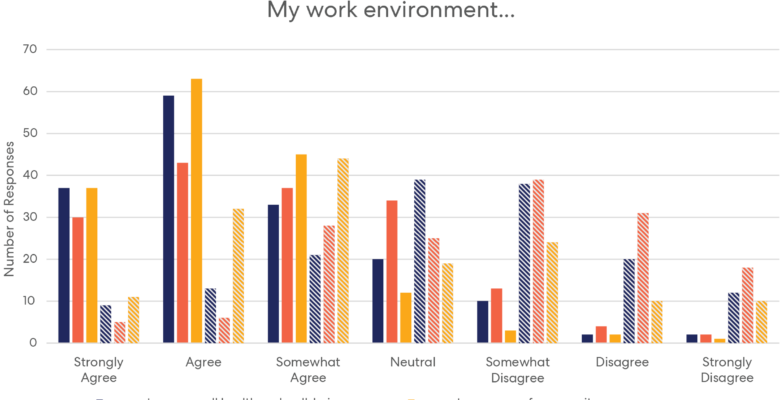Do wellness certifications make the differences that they claim? Implementing design strategies that only focus on a singular certification, or without factoring sustainability metrics inclusive of occupant wellbeing and comfort, can result in suboptimal and regressive design qualities, and compromise several decades of diligent, high-performing
work. Meanwhile, combining multiple rating systems can yield to wholistic sustainable results, ones with a raised sense of wellness, benefiting both the property owners and the occupants. The Dallas studio of Perkins&Will pursued LEED, WELL, and Fitwel certifications in the renovation of a historic building as their new office. Significant wellness impacts were observed in comparisons of the digitally administered pre-occupancy and post-occupancy evaluation surveys. As nearly all the compared metrics indicated significant positive correlation in occupant wellness, such results assert the importance of implementing these rating systems to both inform and validate design decisions.
This article originally appeared in Vol 12.01 of the Perkins&Will Research Journal. CLICK HERE to see the whole article.

